Chinese New Year snacks in Malaysia
We can’t help but admit that we love Chinese New Year. It’s not just the gloriously empty roads and public holiday amid tempting CNY sales and family gatherings. It’s the amazing festive snacks we get to gorge on guilt-free, because who really counts calories during the holidays?
While chowing down on delectables such as crispy love letters, bak kwa, and pineapple tarts is undoubtedly the best part, we’ve discovered some interesting origin stories of popular Chinese New Year snacks in Malaysia that’ll help us enjoy them even more.
Table of Contents
1. Haw Flakes
A sweet medicine for ailments

Image credit: Amazon
Growing up, most of us didn’t even know what these were called – even if the words “haw flakes” have always been scrawled all over the wrapper. It was probably because we immediately ravaged them the moment we got our hands on them.
This nostalgic candy from the 2000s is made from Chinese hawthorn berries, which is where it got its name from. It was believed that haw flakes could treat a number of ailments such as intestinal issues, low energy, and even anxiety. While we wouldn’t bank on it, we certainly don’t need to believe that these little candy discs are a miracle worker to enjoy them as much as we do.
2. Love Letters
A way to confess to your crush
Lore usually needs to be taken with a grain of salt, but some of these stories are just so sweet that we wish they were actually true.
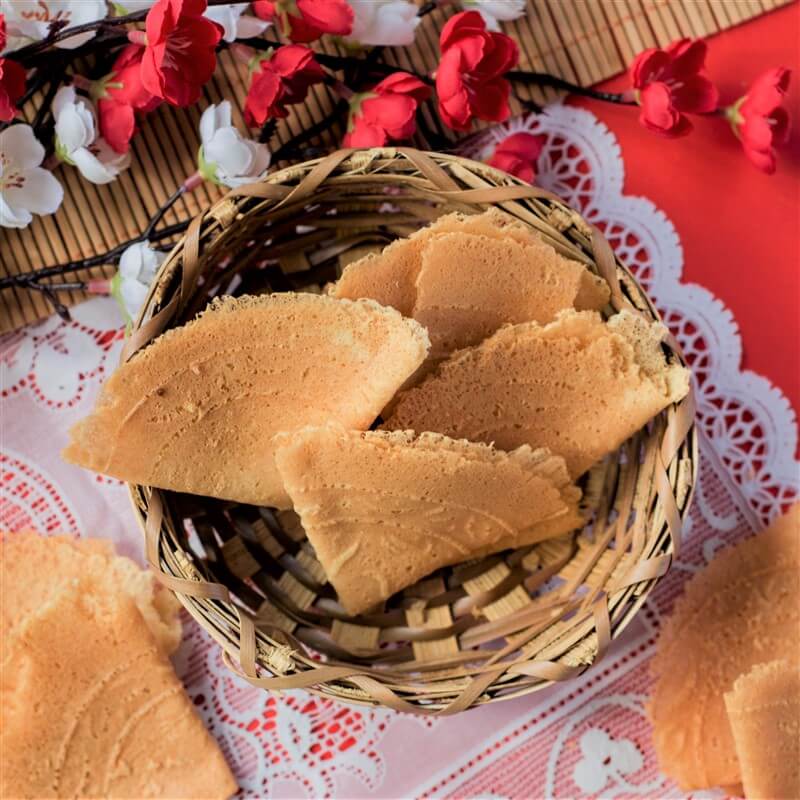
Image credit: Jun And Dus
It is said that love letters, or kuih kapit, were first created in the late 19th century for young maidens who couldn’t openly express their love for their crushes. It was at a time when women were absolutely forbidden to meet boys without a chaperone.
The snack’s edible nature also made it a genius way to get rid of any evidence of the secret rendezvous. When eaten, it also symbolised that the message had been taken to heart.
3. Nga Ku
In hopes that newlyweds can conceive a baby boy
Nga ku – or what Chinese moms like to call “healthy chips” – is an all-time favourite when served to guests. They’re as addictive as the bags of chips you find in grocery stores, which makes going through the whole jar an easy task. Lucky for us, they can easily be made by simply slicing the arrowroot and frying them in hot oil.

Image credit: CNY Delivery
Back in the olden days, parents would plant arrowheads to later present them to their newly–wedded children. This is because the end of the root apparently resembles the genitalia of a baby boy.
And we all know that traditional Chinese families prided themselves in having sons who could pass down the family name, so parents would gift their married children arrowroot hoping the couple would bear them a grandson.
We’re sure this old belief no longer applies, so you can binge on these chips without worrying that the universe is scheming to put a baby in your belly.
4. Nian gao
Monster food and ancient snack stash
When you balik kampung for the annual 2-week-long celebration, you’re bound to see a couple of nian gaos among the ceremonial spread. While it looks barely edible with its rock-hard exterior and mud-brown colour, once cooked and served, it’s a snack that’s enjoyed by all.
In fact, nian gao is so popular that it has 3 origin stories and they’re each an equally impressive tale.
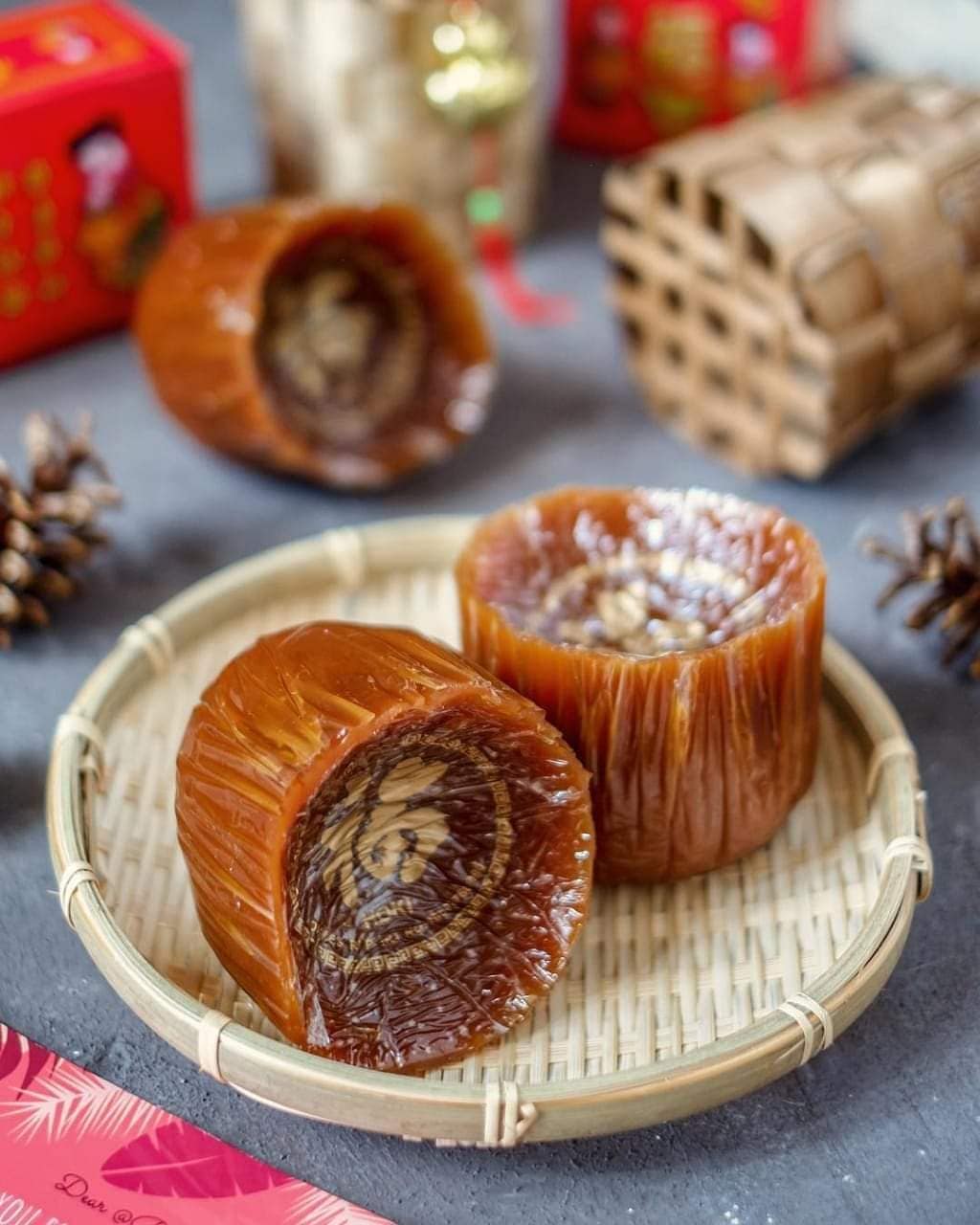
Image credit: @kuehoki via Instagram
According to the 1st legend, this sticky treat was used to bribe the Kitchen God – a deity that lords over every Chinese household. Families would feed it nian gao so that his lips would literally be sealed and he wouldn’t be able to tattle on the family’s wrongdoings when giving his annual report in the Celestial Court.
The second legend sees nian gao being used as bricks to build a wall beneath the ground back in 480 BC. When the city was running low on food supply and its people were left starving, they discovered the rice flour bricks under the wall – a genius idea by a late general of the Wu kingdom.
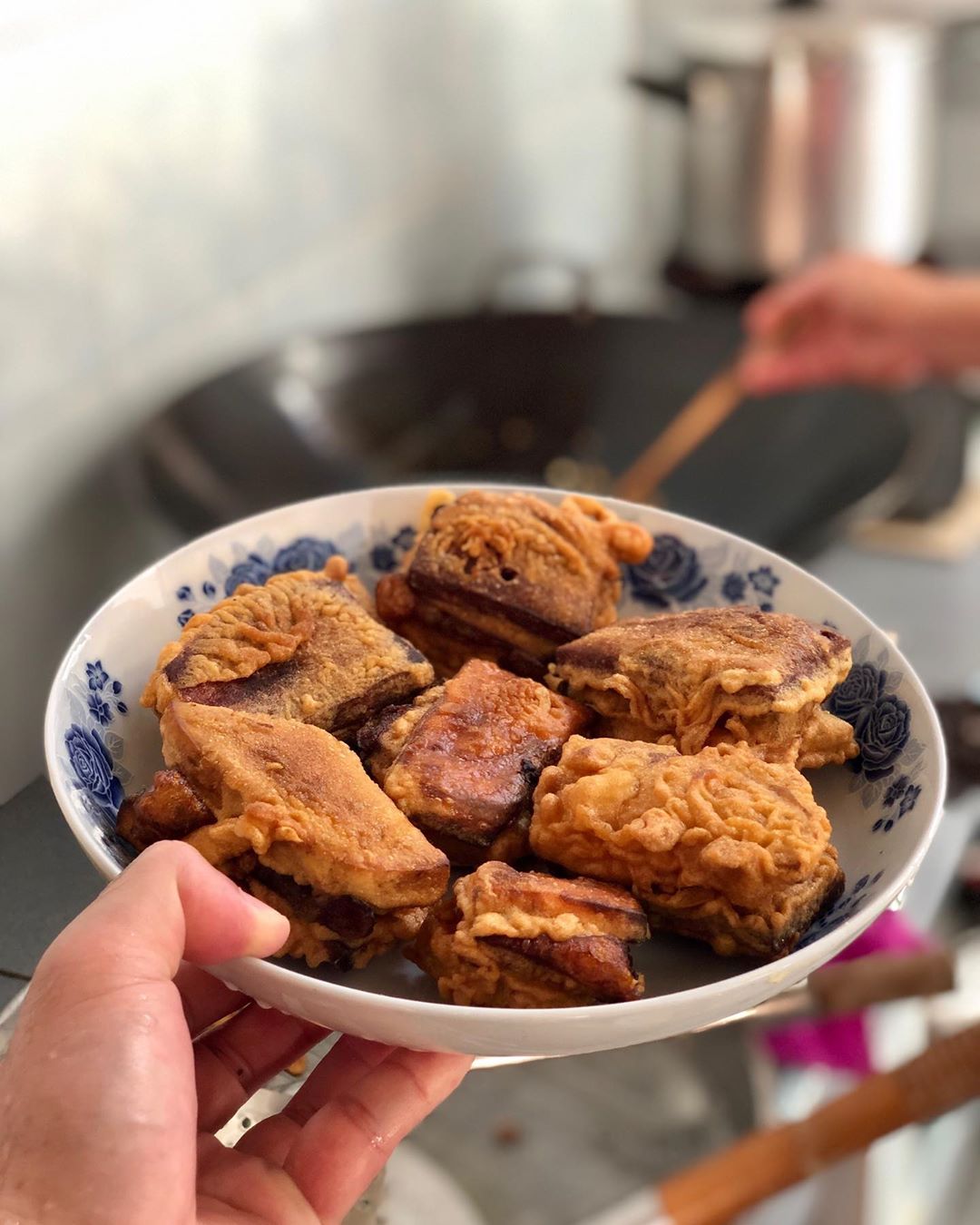
Nian gao is usually sliced and dipped in batter before fried, making it crispy on the outside and gooey on the inside.
Image credit: @leiister_soon via Instagram
Last but not least is the story of the mythical monster Nian. Instead of being warded off by firecrackers, the villagers avoided the wrath of the monster Nian by leaving out pieces of nian gao on their doorstep for the beast. After filling up on nian gao, Nian would head back into its cave without harming any of the villagers.
5. Ang Ku Kueh
To live as long as a tortoise
For those who don’t understand a word of Hokkien, ang ku kueh directly translates to “red cake tortoise”. Odd name, we know. Especially when most of us would’ve never noticed that the pattern imprint is actually that of a tortoise’s shell.
In ancient times, the Chinese would offer live tortoises for rituals as they were a symbol of longevity. However, tortoises were not easy to come by and when there was a shortage of these creatures, people eventually turned to making tortoise-shaped rice cakes.

Ang ku kueh is now a customary offering for numerous joyous celebrations, like a baby’s full moon (one-month birthday) and birthdays.
6. Black Melon Seeds
An abundance of sons and grandsons
Seeds and nuts are a part of every CNY celebration as they’re perfect to snack on when chatting with cousins and kaypoh aunties. Aside from bags of kuachi and groundnuts, you’ll always find a jar of black melon seeds within close reach.

Image credit: Shopee
The Chinese character for seed can also mean children, so black melon seeds typically signify having an abundance of sons and grandsons. The belief is not just restricted to black melon seeds as it applies to kuachi and any other seeds you can think of. As long as it has the Chinese character “子” in its name, the food will symbolise the gift of children.
7. Bak Kwa
A snack for the wealthy
To those in poverty in ancient China, having meat on the dinner table was a rare luxury they couldn’t afford. Besides the wealthy, the rest of the community would only be able to enjoy meat dishes during CNY.
People would preserve leftover meat by slicing them into sheets before leaving them to marinate in a mix of sugar and spices. They were then air-dried before cooked over a hot plate. So began the reign of bak kwa.
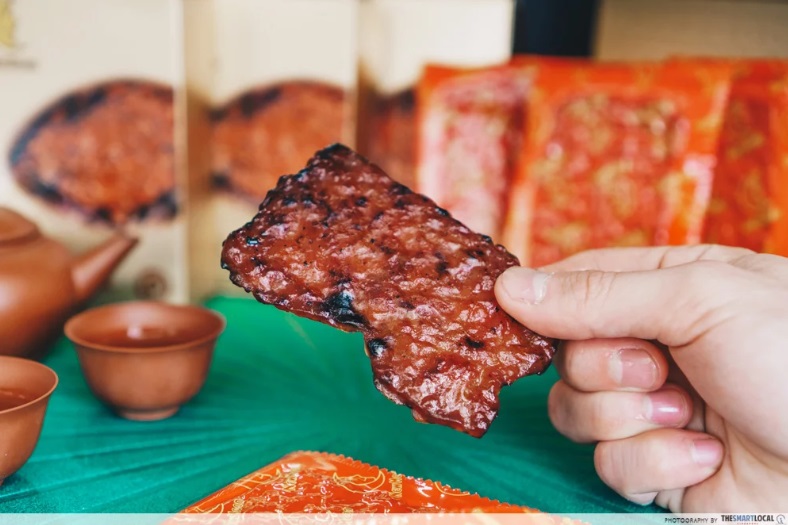
After bak kwa was brought over to Malaysia by immigrants, we began to grill the meat slices over charcoal so that it has a smokier flavour. It’s also sweeter than the OG Chinese version, but we’re pretty happy with how our local rendition turned out and wouldn’t dream of trading it.
8. Pineapple tarts
Translates to “fortune, come”
Pineapple tarts are essential to any living room table during CNY. The moment a jar of these is served at our annual gatherings, they get gobbled up almost immediately.
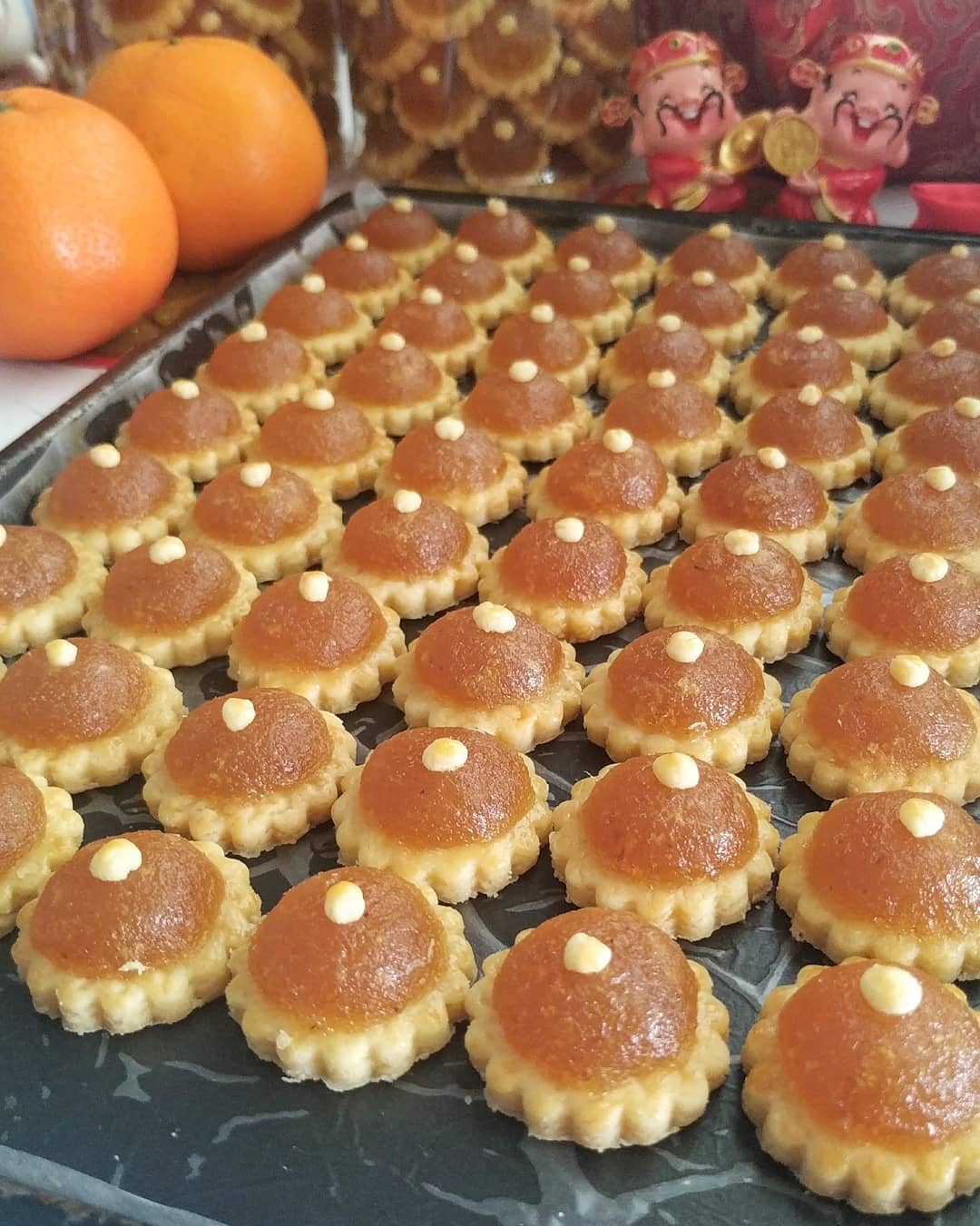
Image credit: @janicelooi via Instagram
The origin story for these tarts traces back to the early 1900s. If you still remember your SPM and PMR days, you might just recall a page out of your Sejarah or even Geografi textbooks that talked about the big rubber boom back then.
Pineapples were grown alongside rubber trees, so there were as many of the fruit as there were rubber trees – acres and acres of them. With the huge supply of pineapples, the Peranakans started exploring different ways to use pineapples in their cooking.
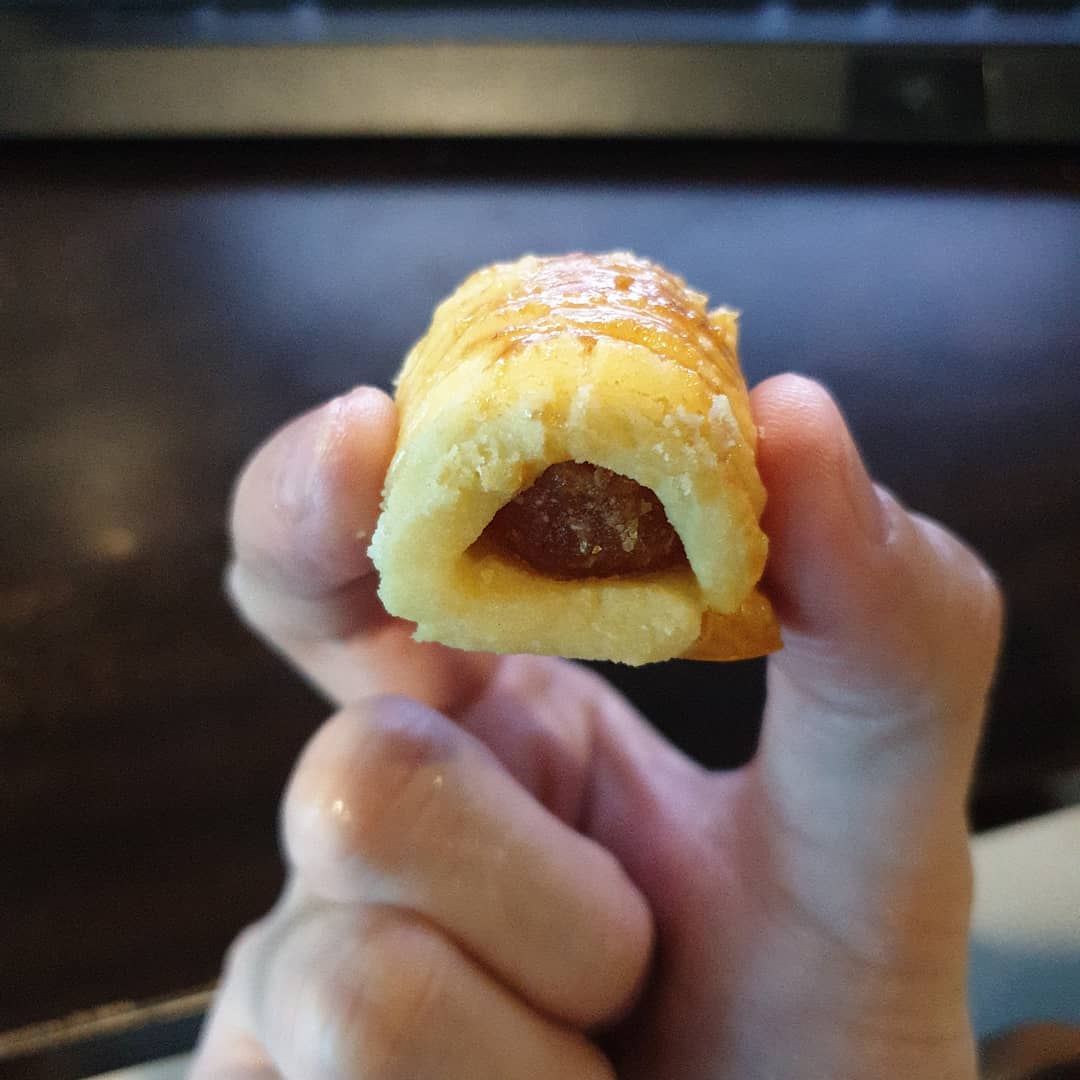
Image credit: @gohkokho via Instagram
They were particularly skilled in making mouth-watering tarts and pastries due to their Portugese influences, which helped create what we now know to be pineapple tarts.
But they’re such a popular treat not just because they’re incredibly yummy; it’s also because the Hokkien word for pineapples can be translated directly to “fortune, come”. Now you don’t have to feel guilty about stuffing yourself with a whole jar’s worth of tarts as fortune’s coming your way. If anything else, this only means you should eat more.
Old legends behind Chinese New Year snacks in Malaysia
Just like how we’re always eager to listen to stories of Chang’E and the Monkey King, we find the legends behind some of our favourite Chinese New Year snacks in Malaysia just as intriguing. It’s easier to keep these traditions alive when we actually know the significance behind these things – as small as they may seem. Our ah mas would be proud!
If you’re spending CNY in town, take full advantage of the half-empty city:
- Kwai Chai Hong’s CNY lantern display in 2025
- Stunning CNY displays in Malaysia
- New glass water slide attraction in Shah Alam
Cover image adapted from: Jun and Tonic, CNY Delivery
This article was first published on 13th January 2020, and last updated in 27th January 2025.
